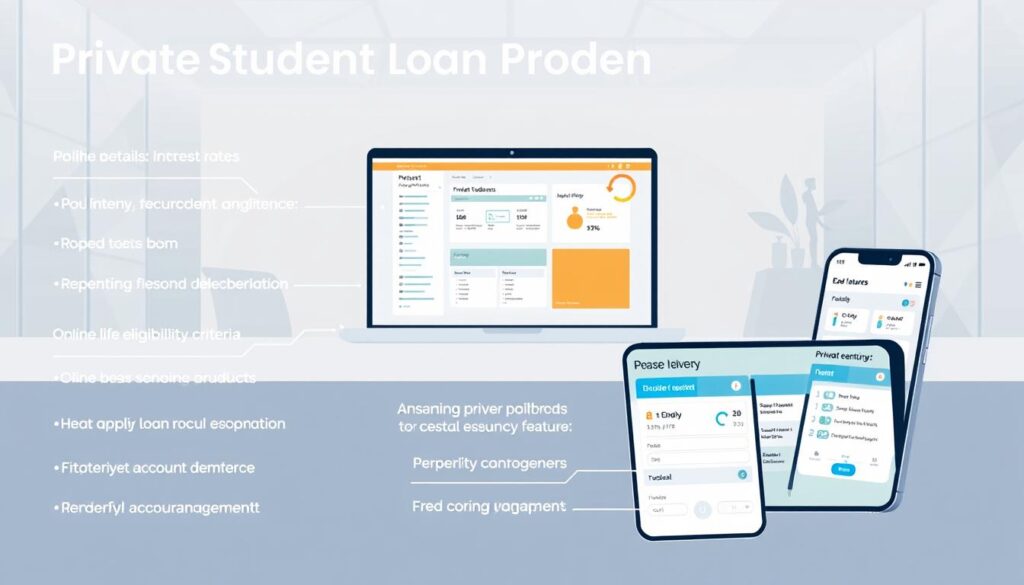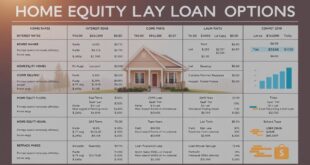Pursuing higher education opens doors to countless opportunities, but figuring out how to pay for it can feel overwhelming. Whether you’re exploring federal aid or private lenders, understanding your options is the first step toward making confident decisions. This guide simplifies the process, helping you find solutions that align with your academic goals and financial needs.
Educational financing isn’t one-size-fits-all. Federal programs often offer fixed interest rates and flexible repayment plans, while private alternatives might provide tailored terms. Comparing these choices ensures you secure funding that works for your situation without compromising future stability.
Interest rates and repayment structures play a huge role in long-term affordability. A lower rate today could save thousands over time, and flexible timelines reduce stress after graduation. We’ll break down how to evaluate these factors so you can borrow responsibly.
This resource covers everything from application steps to avoiding common pitfalls. You’ll learn strategies to minimize debt while maximizing opportunities. Let’s navigate this journey together—because smart planning today builds a brighter tomorrow.
Key Takeaways
- Compare federal and private funding options to find the best fit
- Understand how interest rates affect total repayment amounts
- Prioritize flexible repayment plans for post-graduation flexibility
- Use budgeting tools to estimate manageable borrowing limits
- Review lender requirements to streamline applications
Understanding College Loans
Funding your education doesn’t have to feel like solving a complex puzzle. Let’s break down how these financial tools work and what terms you’ll encounter along the way.
What Are Educational Loans?
Educational funding tools help cover costs when savings and scholarships fall short. These arrangements let you borrow money now to invest in your future career. Federal options typically offer fixed rates and income-driven plans, while private alternatives from banks might provide variable rates or customized timelines.
Every agreement involves repaying both the original amount (principal) and additional charges (interest). For example, a $10,000 private student loan with 5% interest could cost $11,616 over ten years. This shows why comparing rates matters.
Essential Vocabulary for Borrowers
Knowing these terms helps you make informed choices:
- APR: Total yearly borrowing cost including fees
- Grace Period: 6-9 months after graduation before payments start
- Forbearance: Temporary payment pause during financial hardship
Some lenders charge origination fees (1-5% of the borrowed amount), which get deducted upfront. Always check if your school participates in federal programs before considering private solutions. Understanding these basics helps you navigate funding without surprises.
Exploring Private Student Loan Options
Private lenders offer tailored financial tools that adapt to diverse educational paths. With multiple providers competing for borrowers, this market provides specialized solutions when federal assistance doesn’t fully cover expenses. Let’s explore how these options create opportunities for personalized funding strategies.
Benefits and Flexibility
Private student loans often fill gaps by covering up to 100% of school-certified costs. Many lenders provide:
- Variable or fixed interest rates
- Career-specific programs (medical, law, MBA)
- Multiple repayment timelines
Sallie Mae stands out with degree-focused products for nursing students and future dentists. Their terms align with each program’s typical income trajectories.
Leading Private Lenders Overview
Top providers like College Ave and Citizens Bank simplify borrowing with fast approvals. Credible’s comparison tool lets students evaluate offers from Ascent, ELFI, and others instantly. Key differences include:
- Cosigner release policies
- Autopay discounts
- Grace period extensions
“Borrowers should request rate estimates from at least three lenders,” advises a financial aid officer at UCLA. This approach helps identify the most cost-effective terms for individual situations.
While federal options come first, private solutions add flexibility for those managing higher expenses. Always verify lender credibility through customer reviews and accreditation checks before committing.
Federal Student Loans vs Private Student Loans
When educational costs exceed savings, students often face a critical funding decision. Federal options should always come first—they’re backed by the government and include built-in safeguards like income-based repayment and potential forgiveness programs.
Federal student loans offer fixed interest rates that stay predictable over time. Most undergrads qualify without credit checks, and repayment plans adjust based on post-graduation earnings. Private alternatives, while useful for filling financial gaps, lack these protections.
| Feature | Federal Student Loans | Private Student Loans |
|---|---|---|
| Application Process | FAFSA required | Credit application |
| Credit Check | Not needed for most | Required (cosigner often needed) |
| Interest Rates | Fixed by Congress | Set by lender (variable/fixed) |
| Repayment Flexibility | Income-driven plans available | Limited options |
Federal programs have annual borrowing limits, which means private loans might cover remaining expenses like housing or books. However, private lenders rarely offer deferment options or forgiveness pathways.
Always max out federal aid before considering other routes. This approach keeps long-term costs lower and reduces financial stress after graduation.
Private Student Loan Features and Benefits
Choosing the right financial tools requires understanding how features like interest rate adjustments and flexible timelines impact your budget. Private lenders often reward proactive borrowers with discounts while offering choices between stable or market-responsive terms.

Interest Rate Reduction and Variable Rates
Interest rate reductions can lower your borrowing costs significantly. Many lenders offer a 0.25% discount when you enroll in automatic payments. For example, Sallie Mae applies this benefit immediately after setting up auto-debit.
Fixed rates keep monthly payments predictable, while variable rates may start lower but fluctuate with financial markets. Consider this comparison:
| Rate Type | Pros | Cons |
|---|---|---|
| Fixed | Stable payments | Higher initial rates |
| Variable | Lower starting rates | Potential increases |
Some providers add extra discounts for loyal customers or those completing degrees. Always ask lenders about graduation rewards or relationship-based rate reductions.
Repayment Options Tailored to Your Needs
Private borrowing solutions adapt to different career paths through customized timelines. Options include:
- Immediate repayment to minimize interest
- Interest-only payments during school
- Full deferment until 6 months post-graduation
Graduated plans let you start with smaller payments that increase as your salary grows. Terms range from 5 to 20 years, giving flexibility to match your financial forecast. “Selecting the right timeline prevents payment shock,” notes a Citizens Bank advisor.
These features help create personalized strategies that align with your academic timeline and earning potential.
College Loans: Key Considerations for Borrowers
Managing educational expenses requires smart planning for both current costs and future obligations. Payment structures during school enrollment shape how much you’ll owe later—choosing wisely can save thousands over time.
Understanding Payment Structures
Lenders typically offer four repayment approaches while you’re enrolled:
- Full principal + interest: Pay everything monthly to avoid interest buildup
- Interest-only: Cover accruing charges without reducing original balance
- Fixed $25 payments: Small monthly contributions to slow balance growth
- Deferred: Postpone all payments until after graduation
Making full principal and interest payments shrinks your total debt fastest. A $15,000 private student loan at 6% interest would accumulate $3,600 in charges over four years if deferred. Paying interest monthly keeps the balance at $15,000 instead of $18,600.
| Option | Monthly Payment | Total Cost Impact |
|---|---|---|
| Full Payments | $175 | Saves $3,600+ |
| Interest-Only | $75 | Prevents balance growth |
| $25 Fixed | $25 | Reduces interest capitalization |
| Deferred | $0 | Highest long-term cost |
Consider your expected income after graduation. A graphic design major might choose deferred payments, while an engineering student could handle interest-only plans knowing their earning potential. “Match payment choices to your career trajectory,” suggests a financial advisor at Wells Fargo.
Balancing school demands with smart payment habits creates stability. Even small contributions during studies ease post-graduation burdens, letting you focus on career growth instead of debt.
How Credit Scores Influence Loan Approval
Lenders look beyond your application to assess how likely you are to repay what you borrow. Your credit score acts like a financial report card, showing your history of managing debts. Private student lenders often require scores above 650 for competitive rates—but there’s good news for those still building credit.
Role of Cosigners in the Process
Adding a cosigner can boost approval odds dramatically. Last year, students with creditworthy cosigners were 4x more likely to get approved. Major lenders like Sallie Mae report that 91% of undergraduate borrowers use this strategy.
A cosigner shares legal responsibility for repayment. Their income and credit history strengthen your application, but missed payments affect both parties’ scores. “Choose someone who understands this partnership,” advises a Bank of America lending specialist.
Evaluating Your Creditworthiness
Lenders review multiple factors to gauge risk:
- Credit scores (aim for 670+)
- Debt-to-income ratios below 35%
- Stable employment history
| Credit Score Range | Approval Likelihood | Typical Terms |
|---|---|---|
| 720+ | Highest | Lowest rates |
| 680-719 | High | Competitive rates |
| 640-679 | Moderate | Higher rates |
| <640 | Low | Cosigner required |
Many lenders offer cosigner release after 24 months of timely payments. Maintaining good credit habits during school helps both borrowers and cosigners qualify for better rates on future financial needs.
Repayment Strategies for College Loans
Crafting a smart repayment plan transforms how you manage educational costs over time. Choosing the right approach balances immediate affordability with long-term savings, letting you focus on studies while controlling debt growth.
Full Principal and Interest Payments
Paying both principal and interest during school minimizes total costs. This strategy reduces your balance faster and prevents unpaid interest from being added to the original amount. For example, a $20,000 loan at 5% interest would cost $3,000 less over ten years compared to deferred payments.
| Strategy | Monthly Payment | 10-Year Savings |
|---|---|---|
| Full Payments | $212 | $3,000+ |
| Interest-Only | $83 | $1,200 |
| Deferred | $0 | $0 |
Balancing Flexibility and Cost
Many lenders let students make interest-only payments or fixed $25 monthly contributions while enrolled. These options keep balances stable without straining budgets. Graduated Repayment Plans (GRP) take this further by allowing 12 months of interest-only payments after school ends.
Deferred plans postpone all payments until graduation but often increase total costs by 15-20%. “Match your strategy to expected earnings,” suggests a Sallie Mae advisor. Future teachers might prefer lower payments initially, while engineers could handle higher contributions sooner.
Most providers let you switch plans annually as circumstances change. This adaptability helps borrowers navigate career shifts or unexpected expenses without penalty.
Loan Terms and Conditions Explained
Understanding the fine print helps you avoid surprises down the road. Let’s simplify how fees, timelines, and policy details shape your financial commitment.
Decoding Origination Fees and Other Costs
Origination fees can add hundreds to your total borrowing costs. Some lenders like Sallie Mae eliminate these charges entirely—meaning you keep every dollar you borrow. This approach makes comparing loan term options clearer from the start.
Choose repayment timelines between 5-15 years based on your budget. Shorter terms mean higher monthly payments but lower interest overall. Longer plans reduce immediate pressure while increasing total costs. Information advertised valid as of 6/03/2025 includes these flexible options, though rates may vary by lender.
Always verify current terms before applying. Lenders reserve the right to update products, so review agreements carefully. A 10-year student loan at 6% APR costs 40% less interest than a 15-year plan—proof that smart term selection matters.
Remember: advertised valid details reflect today’s offerings, not future guarantees. Bookmark lender websites for policy updates, and ask questions if rates may change after approval. With this knowledge, you’re ready to make empowered decisions about educational financing.
 Website Teknologi Terupdate
Website Teknologi Terupdate







